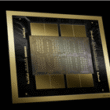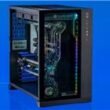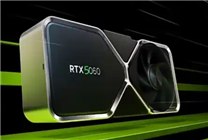The Future of Mid- to Low-End Graphics Cards: Navigating Market Shifts Driven by AI Demand
Overview
- Nvidia and AMD are contemplating cuts to mid- to low-end graphics card lines amid rising production costs.
- The surge in demand for high-bandwidth memory (HBM), driven by the AI sector, is reshaping the chip market and impacting graphics card pricing.
- Consumers seeking budget-friendly gaming options may face challenges as manufacturers focus on high-end products for profitability.
The graphics card market is currently facing significant upheaval, with Nvidia and AMD weighing decisions to cut or completely terminate some of their mid- to low-end product lines. This development has sent shockwaves through the industry, particularly concerning the affordability and availability of budget-friendly GPUs.
The Rise of AI and Its Implications
The driving force behind this shift lies within the burgeoning AI industry. Demand for high-performance computing and expansive storage for AI applications has reshaped the entire memory chip market. Reports indicate that memory manufacturers are redirecting their production capabilities toward high-bandwidth memory (HBM), which has led to a constrained supply of traditional DRAM and NAND flash memory. Consequently, prices for these memory types have soared.
In recent months, the volatility of the memory market has reached unprecedented levels. Notably, prices for DDR4 and DDR5 memory products have skyrocketed by 158% and 307%, respectively, within mere weeks. These rising costs have made it challenging for manufacturers to manage expenses and maintain competitive pricing, ultimately impacting sales and production decisions.
Manufacturing Costs: A Rising Challenge
As memory chip prices escalate, the graphics card sector finds itself under considerable pressure. The cost of memory has become a substantial component of the overall bill of materials (BOM) for graphics cards, with entry-level options facing the brunt of this financial strain. Analysts have indicated that the increasing expenses associated with video memory could render it one of the most expensive elements in budget models, squeezing profit margins even tighter.
The potential for future price hikes is concerning. TrendForce analysts have projected that DRAM and NAND flash contract prices could continue to rise into 2026, leading to further increases in BOM costs by an estimated 5-7%. This gloomy outlook has compelled manufacturers like Nvidia and AMD to consider scaling back production of budget GPUs such as the RX 9060 XT and RTX 5060 series.
Strategic Shifts in Manufacturing Focus
In response to these economic pressures, manufacturers are actively recalibrating their strategies. Some companies, including Asus, are exploring the option to reduce memory capacity in their lower-end models to mitigate costs effectively. Nvidia, too, has responded to the crisis by halting the production of the RTX 50 series Super version, which was earmarked for release in early 2024. This decision stems from the increased memory requirements associated with that model.
Impact on Consumers
If budget GPUs become scarce, the ramifications will stretch beyond mere market dynamics, severely affecting consumers. Entry-level graphics cards serve as vital options for a diverse demographic, including students, first-time builders, and esports gamers who do not require high-end specifications. The elimination of affordable GPUs could make 1080P gaming a costly endeavor.
Moreover, projections indicate that the average retail price of laptops may experience a rise between 5-15% due to the increased costs of memory chips. This escalation may also contribute to a 2.4% decline in laptop production over the next few years, further squeezing consumer choices.
A Shift Towards a New Market Landscape
The memory chip market appears to be entering a long-term growth phase, often referred to as a "super cycle." Industry analysts project that this upward trajectory could last for several years, bolstered by demand rooted in AI infrastructure rather than traditional consumer needs. Companies like JPMorgan Chase predict that the DRAM market could experience unprecedented pricing momentum from 2024 to 2027, potentially expanding the global storage market to nearly $300 billion by 2027.
In this evolving landscape, domestic companies in various regions are presented with opportunities. If they can innovate and advance in high-end technologies such as HBM, these firms could carve out a niche in this high-growth market.
Conclusion: Navigating the Future
The transformation in the graphics card and memory chip sectors, largely driven by advancements in AI, underscores a pivotal moment for manufacturers and consumers alike. While Nvidia and AMD’s focus on high-end products may seem rational within the existing market context, it is essential to recognize the potential implications for price accessibility and market diversity.
The challenge lies in finding a balance between fostering technological innovation and ensuring that market options remain diverse and accessible. As the AI wave continues to shape industries, the ultimate goal should be to cultivate an inclusive development model that benefits all stakeholders in the supply chain. The question remains: Can the tech industry create an environment where the advantages of innovation are equitably distributed among consumers?







